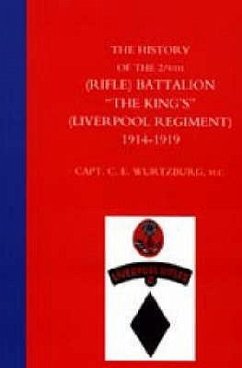This second-line Territorial battalion was formed at Liverpool in early September 1914, allocated to 171st Bde, 57th Division and landed in France on 14 Feb 1917; it fought on the Western Front for the rest of the war. The author served with the battalion for much of the war though he does spell out the periods he was away from it when he gained his information from those present at the events he describes. The battalion took part in all the fighting of the division, in Third Ypres, Drocourt-Queant Switch in the Hindenburg Line, Cambrai (Oct 1918) and the occupation of Lille. Of particular value to the genealogist and medallist are the appendices. One gives the succession of COs, 2ICs, Adjutants and Quartermasters from the formation of the battalion and, after it arrived in France, the list of the company commanders and WOs. A second appendix lists all the officers showing the period served served with the battalion and the reason for leaving, the highest rank achieved, appointments held, honours and awards and casualty details (ten dead, twenty-nine wounded), while the third does the same for the other ranks of whom 234 died. The narrative is full of incident, plenty of names mentioned as there should be in a good regimental/battalion history. and the maps are clear, marking out trench systems with names and and pinpointing features on the battlefield. The photos are good, including portrait photos of officers and battlefield scenes. This is an excellent example of a battalion history.
Bitte wählen Sie Ihr Anliegen aus.
Rechnungen
Retourenschein anfordern
Bestellstatus
Storno







